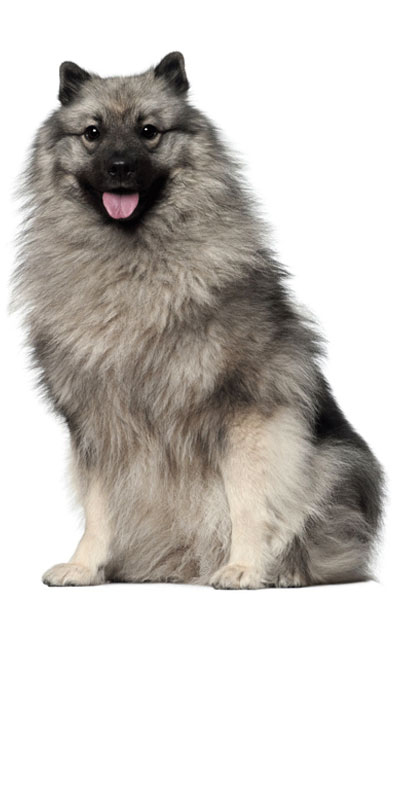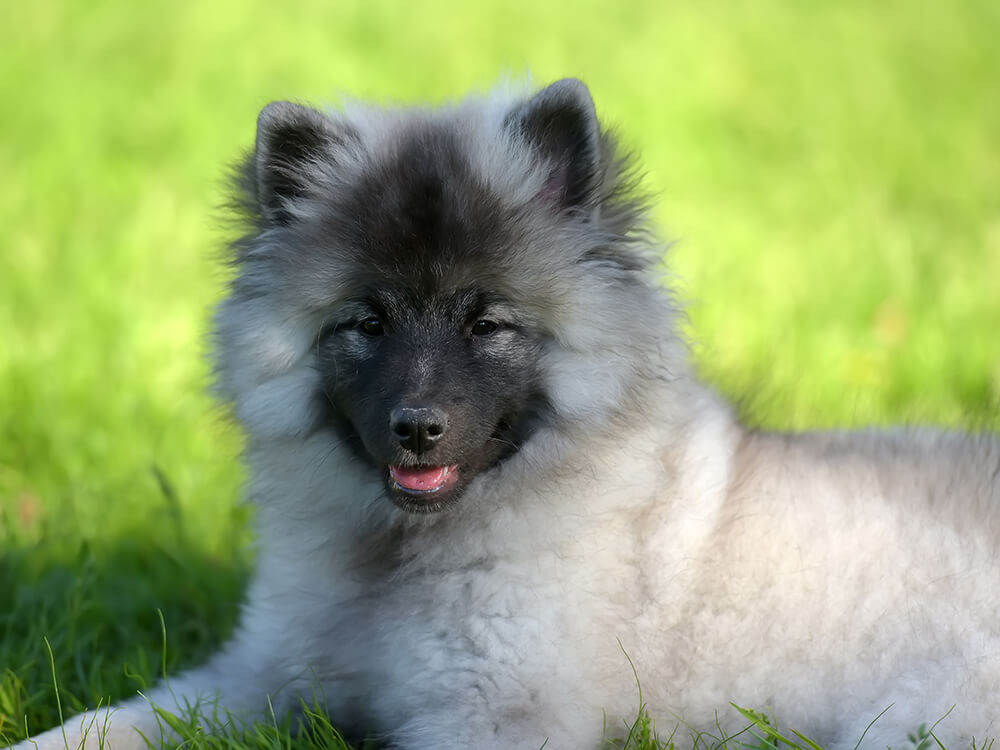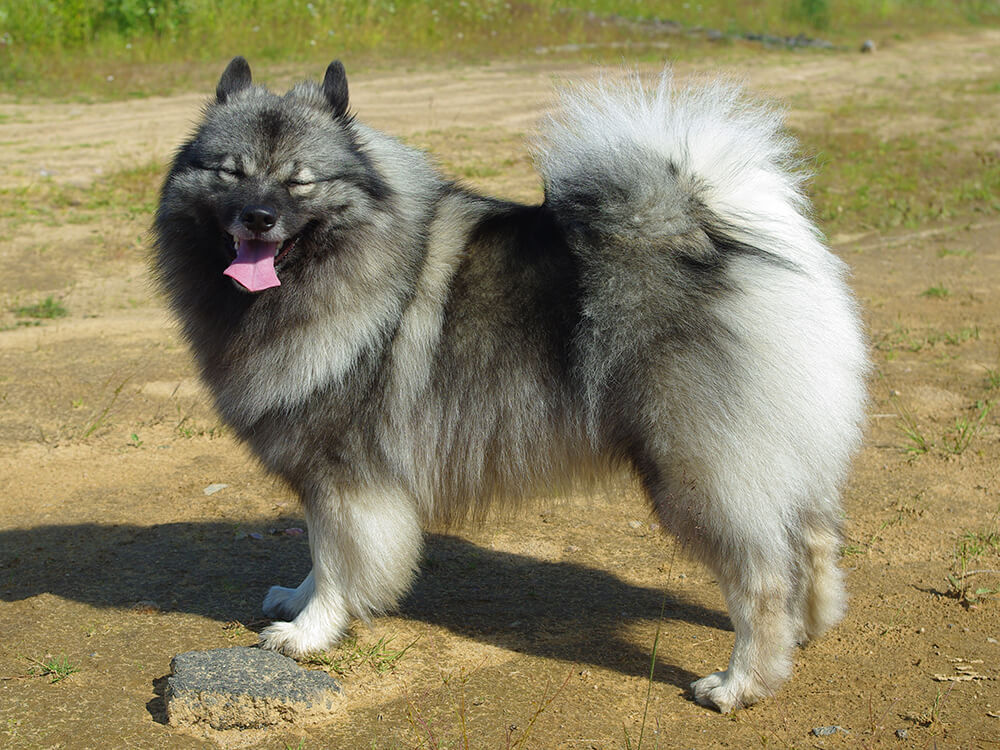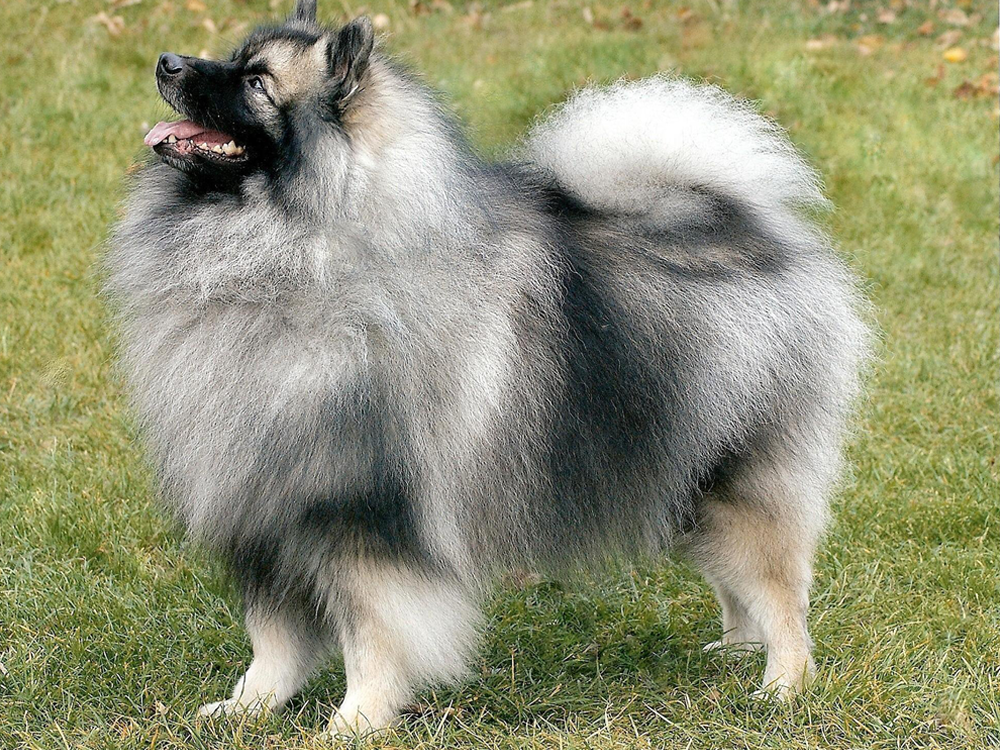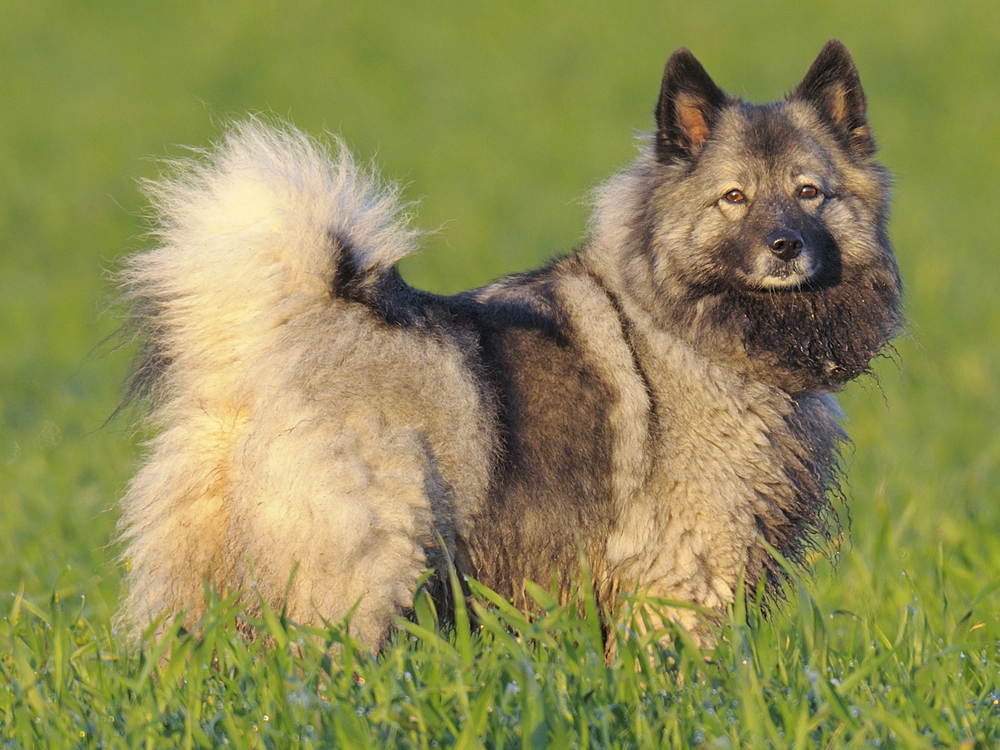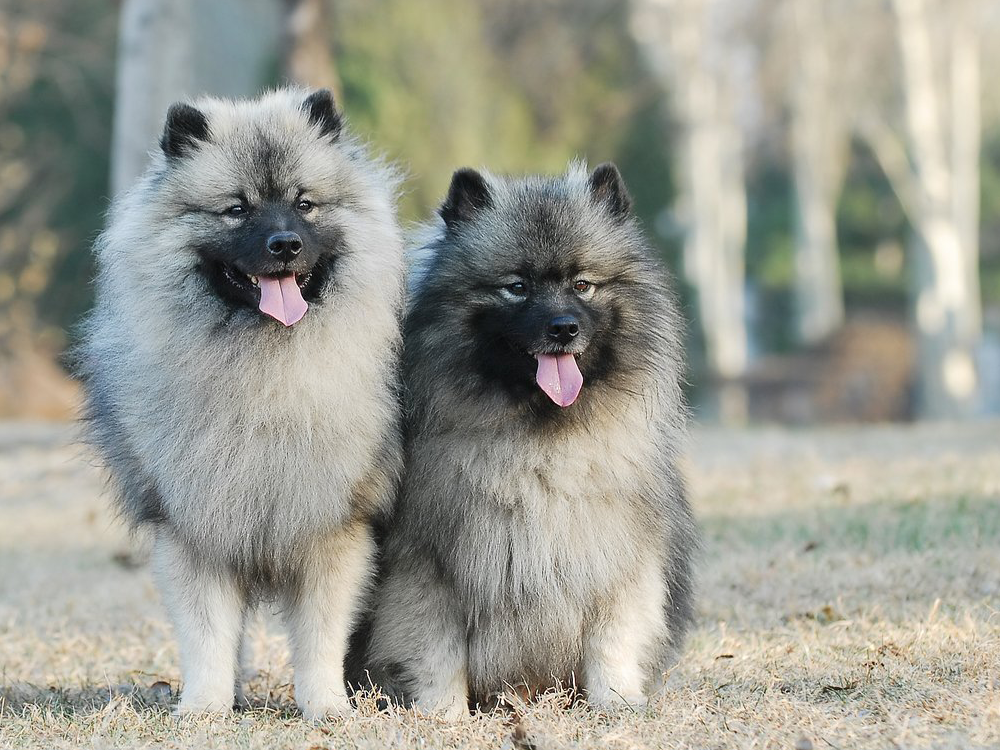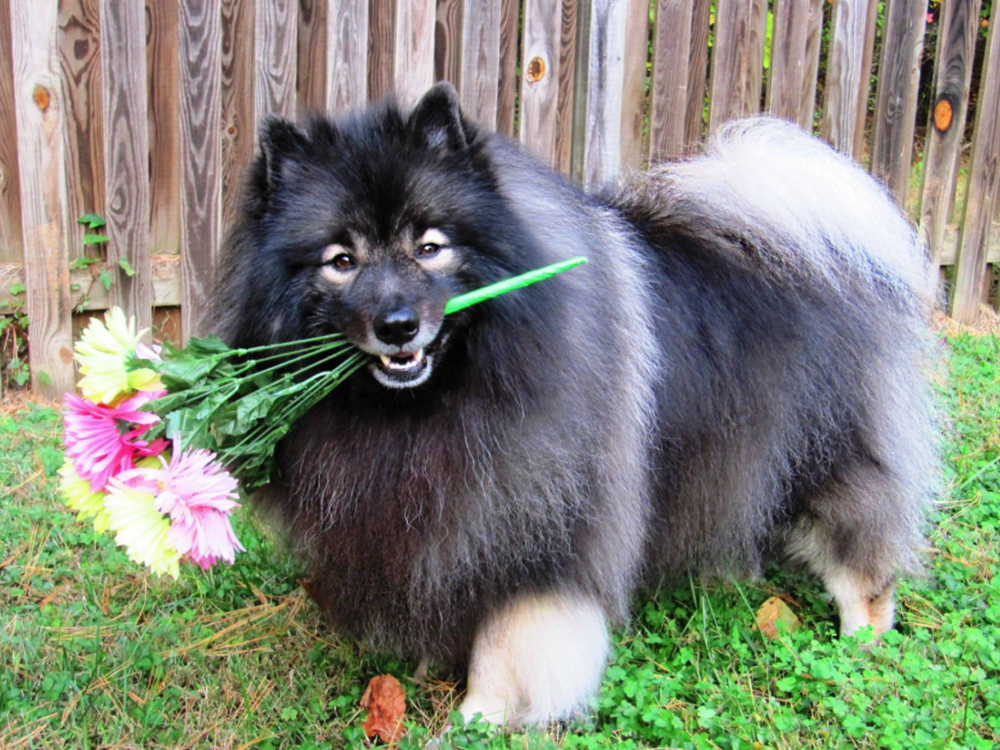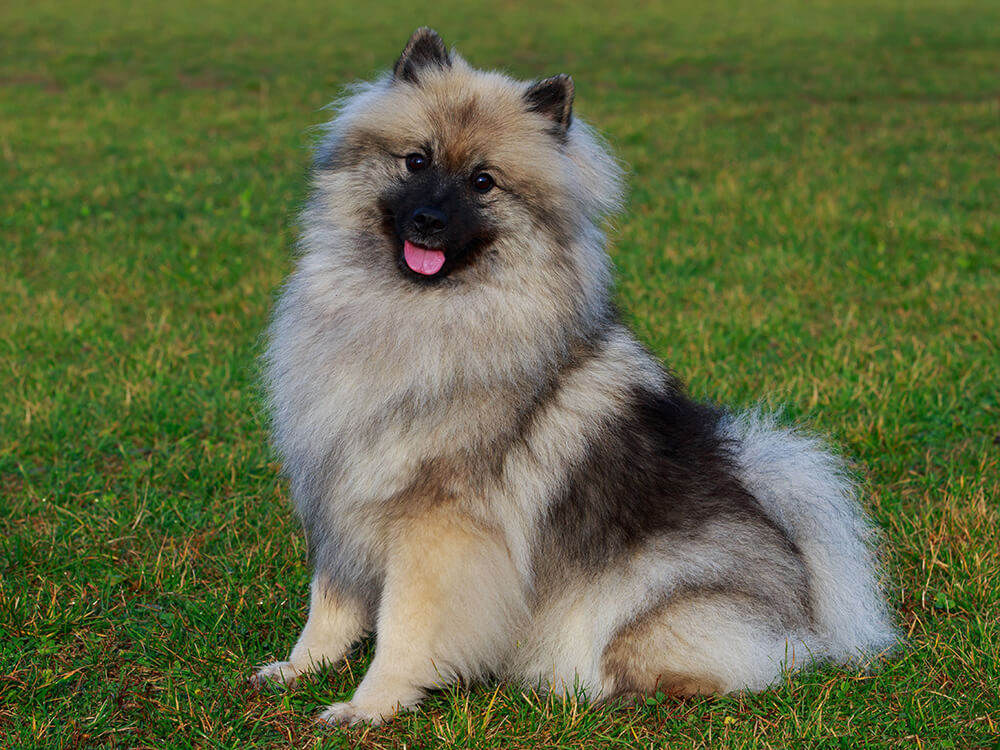
Keeshond Breed Pictures
Vital Breed Stats
| Height: | 44 - 48 cm M | 40 - 46 cm F |
| Weight: | 15 - 20 kg M | 15 - 20 kg F |
| Breed Group: | Terrier Dog Group |
| Life Expectancy: | 11 - 14 years |
| KC Registered: | No |
Breed Characteristics
| Size: |  |
| Grooming: |  |
| Exercise Level: |  |
| Barking Level: |  |
| Good with Children: |  |
| Good with other pets: |  |
| Affectionate: |  |
| Protective: |  |
| Cost to Keep: |  |
Give a thumbs up if you love the Keeshond

0
More About the Breed
History
The Keeshond is believed to have been bred in the Arctic regions in the 1700s, being a cousin to the Chow, Samoyed, Finnish Spitz, Pomeranian, and Norwegian Elkhound breeds. It served as a companion and watchdog on small vessels on the Rhine River, quickly becoming popular in Europe especially in the Netherlands. The breed later on reached Holland, France, Italy and Germany and was crossed with German Spitz-type dogs.
The breed got its name from Cornelius de Gyselaar, who was fondly called Keesh, a Dutch party leader fighting for Dutch Patriots against William of Orange. This type of dog was used as the emblem and mascot of the party. Keeshonds almost succumb to extinction when the Patriots lost to the House of Orange. People didn’t want to be associated with the rebellion so the dogs were sadly abandoned or killed. Some dogs were able to survive in Dutch farms and vessels in Amsterdam. Miss Hamilton-Fletcher, (became Mrs. Wingfield-Digby) is credited for having the foundation stock of Keeshonds outside Holland when she took two puppies home in 1905. The breed arrived in England in 1926.
However, the breed’s numbers continued to decline but was saved thanks to Baroness von Hardenbroek when he began a breeding program in the 1920s. This utility dog was first registered with The Kennel Club as the Dutch Barge Dog. Its numbers gradually grew in Europe as a great family pet because of its loyal and affectionate characteristics. However, it is still considered rare in many parts of the world, including the UK.
Appearance
The Keeshond is a short dog with a fox-like head and compact body, which exudes confidence. It is a medium-sized dog standing 40 to 46 centimetres at the withers and weighing 30 to 40 pounds. There is noticeable different in size between males and females with the former being more muscular and heavier. Because it always has a charming smile on its face, it is often called the Smiling Dutchman.
Keeshonds have nicely proportion heads that are wedge-shaped when viewed from above. They have dark muzzles, black noses, medium almond-shaped eyes, ivy-leaf shaped ears that are velvety to the touch, and strong jaws with a perfect scissor bite. Their necks are moderately long and covered in profuse hair.
The Keeshond is a Spitz-type dog that boasts of a plush and waterproof double coat comprising of a long, harsh and straight outer coat and a soft woolly undercoat. The breed comes in a mixture of grey, black and cream. All shades of grey are acceptable.
Grooming
Temperament
Intelligence
Keeshonds are intelligent dogs that are also people pleasers. The combination of the two makes it highly trainable. However, as a word of precaution, owners, especially inexperienced ones should start training early so the alpha role is established. These dogs are generally obedient when they know their place in the pack, which is below everyone else in the household. If not, it will try to be dominant. Keeshonds have a sound temperament but tend to be annoying barkers especially that they are alert and sensitive to movement and sounds. While this may make them good watchdogs, this behaviour can be a problem in your neighborhood.
Breeds may have predisposed temperament and intelligence but owners need to know that environment, training and socialisation also contribute in the development of their overall personalities.
Nutrition
- Senior and less active: up to 890 calories daily
- Typical adults: up to 1,000 calories daily
- Physically active/working dogs: up to 1,100 calories daily
Feeding
Health
Exercise
Cost of Ownership
Can you afford to own a Keeshond? Since this breed is rare in the UK, only a few puppies are registered per year. You need to be on a waitlist before you can purchase a puppy. This also means that the price will be more expensive.
Here is a list of the general expenses of caring for one:
- Pedigree puppy - £700 to £1,000
- Insurance - £20 to £50 monthly for basic and lifetime insurance
- Food - £25to £35 monthly
- Initial equipment (crate, bed, bowl, leash, collar, toys, etc.) - £200
- Veterinary care - can add up to £800
Keeshond Breed Highlights
- The Keeshond is an intelligent, friendly and alert dog.
- It forms strong bonds with family and tends to be clingy, which is why it cannot be left alone.
- The Keeshond may have profuse hair but it is a generally clean dog. Grooming becomes tedious because it sheds steadily all year long, more heavily twice a year.
- It is a rare breed in the UK so obtaining a puppy can be challenging.
- The breed is suitable for first-time owners and families with children.
